Saving your own cucumber seeds to grow the following year is a wonderful idea, and a great experiment to do with kids. There are a few things to keep in mind though as not all cucumber seeds will grow true to type!
While the idea of saving your own seeds from the cucumbers grown in your own garden is very appealing, it may not be practical for everyone, depending on what type of cucumbers you are growing!
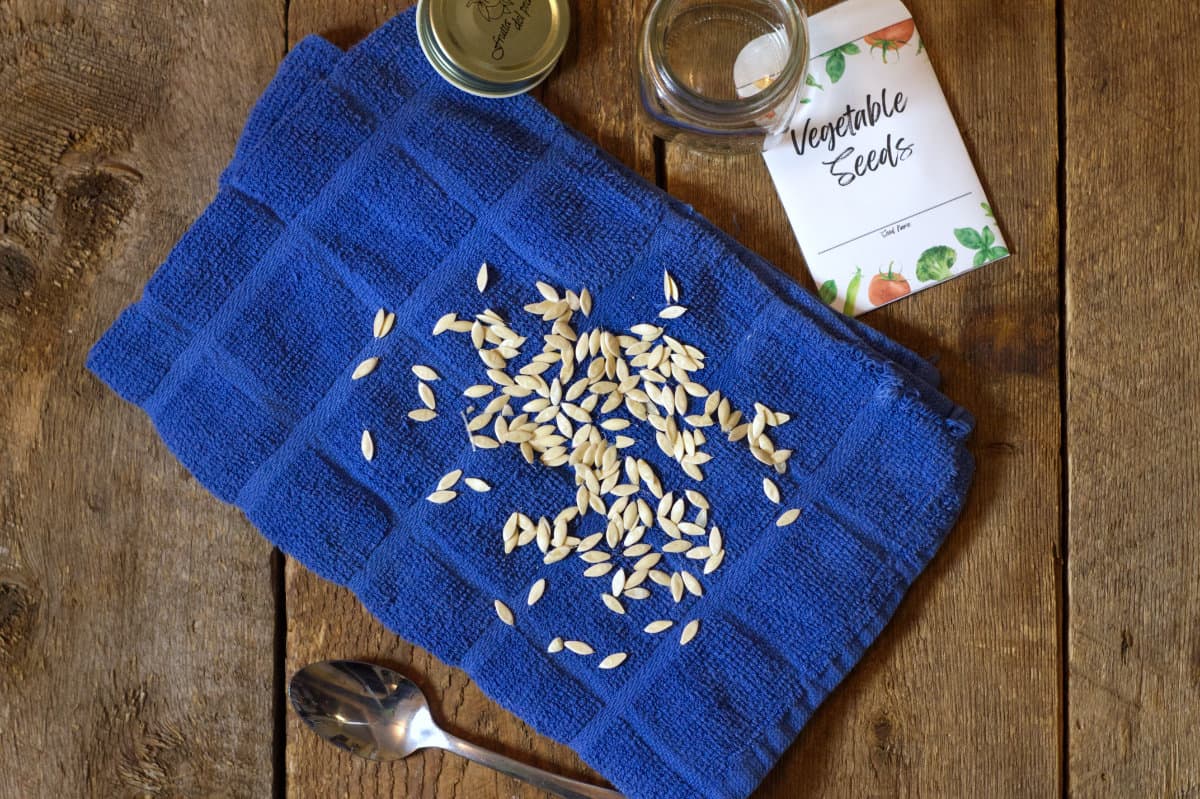
Hybrid vs Heirloom Varieties
Many cucumber seeds sold at greenhouses and grocery stores these days are hybrid varieties. This means two varieties of cucumbers where very carefully cross pollinated to create a specific variety with certain traits. This is done to create cucumbers ideal for pickling, for eating fresh, with or without seeds, etc.
Seeds saved from hybrid varieties will most often not reproduce true to type, or can even be sterile and not sprout at all.
Heirloom varieties (varieties that have been grown successfully for 50 years or more)on the other hand, are generally open-pollinated and much more likely to reproduce true to type, though even here there are a few issues to overcome.
As such if you do choose to save your own cucumber seeds, selecting heirloom or heritage varieties will give you the best chance for success.
The Pollination Problem
The other main problem most gardeners, (especially home gardeners) will face is that since cucumbers require pollination by the wind, insects such as bees, or even humans, it is very easy to accidentally cross pollinate cucumber plants with other varieties resulting in hybrids that may not produce true to type.
If you do plan on saving seeds from a specific heirloom cucumber variety, try and ensure no other cucumber varieties are planted anywhere nearby for the best chances of success!
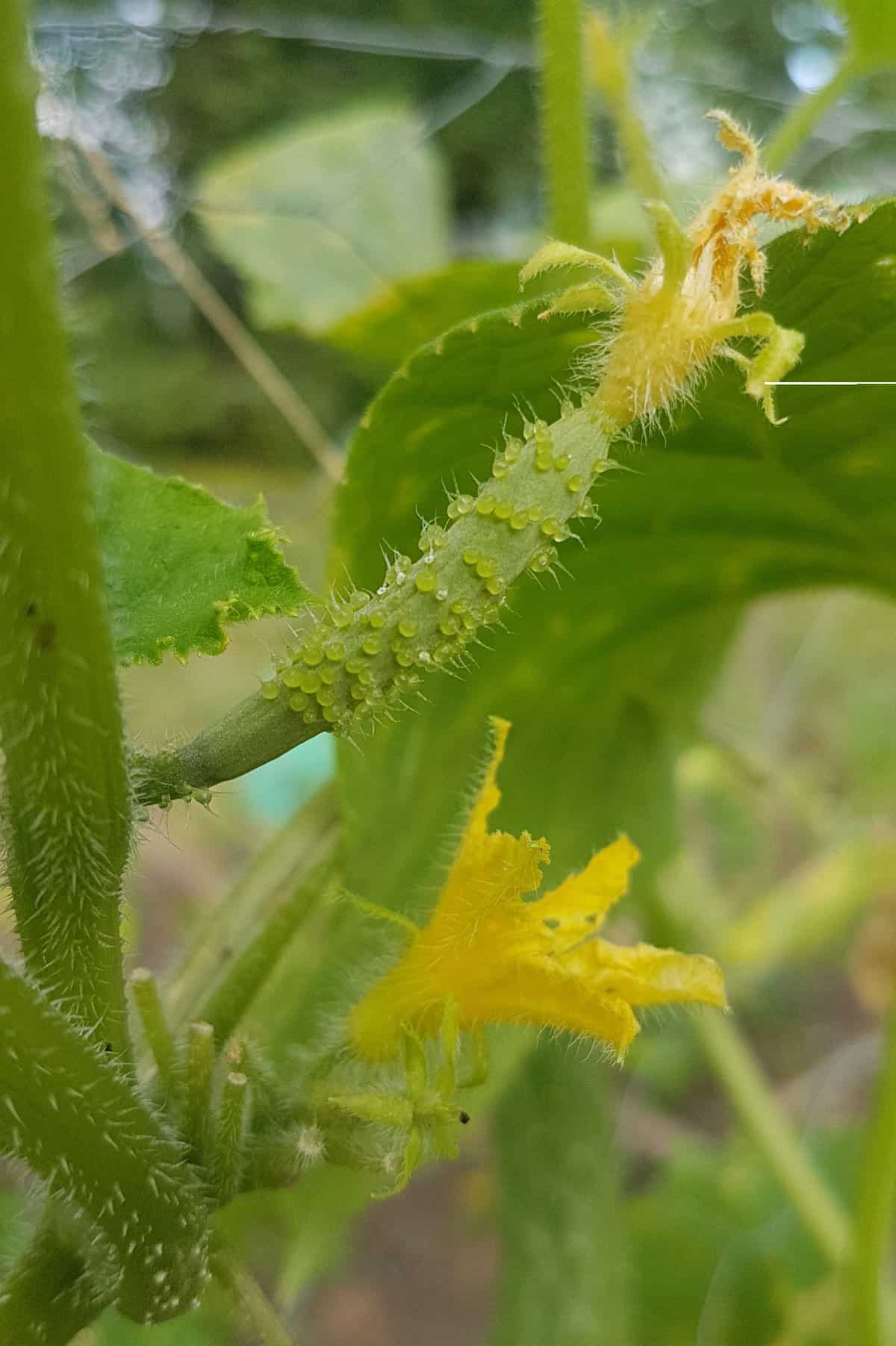
How To Save Cucumber Seeds
Cucumber seeds are only ready to harvest when the cucumber fruit itself are fully mature. This requires leaving a cucumber on the vine to fully ripen until it is bright yellow or orange in color.
What You'll Need
- a fully mature cucumber
- a small bowl or mason jar
- a spoon
- room temperature water
- a small strainer
- paper towel or linen cloth
- sticker labels to label your seeds for next year.
Instructions
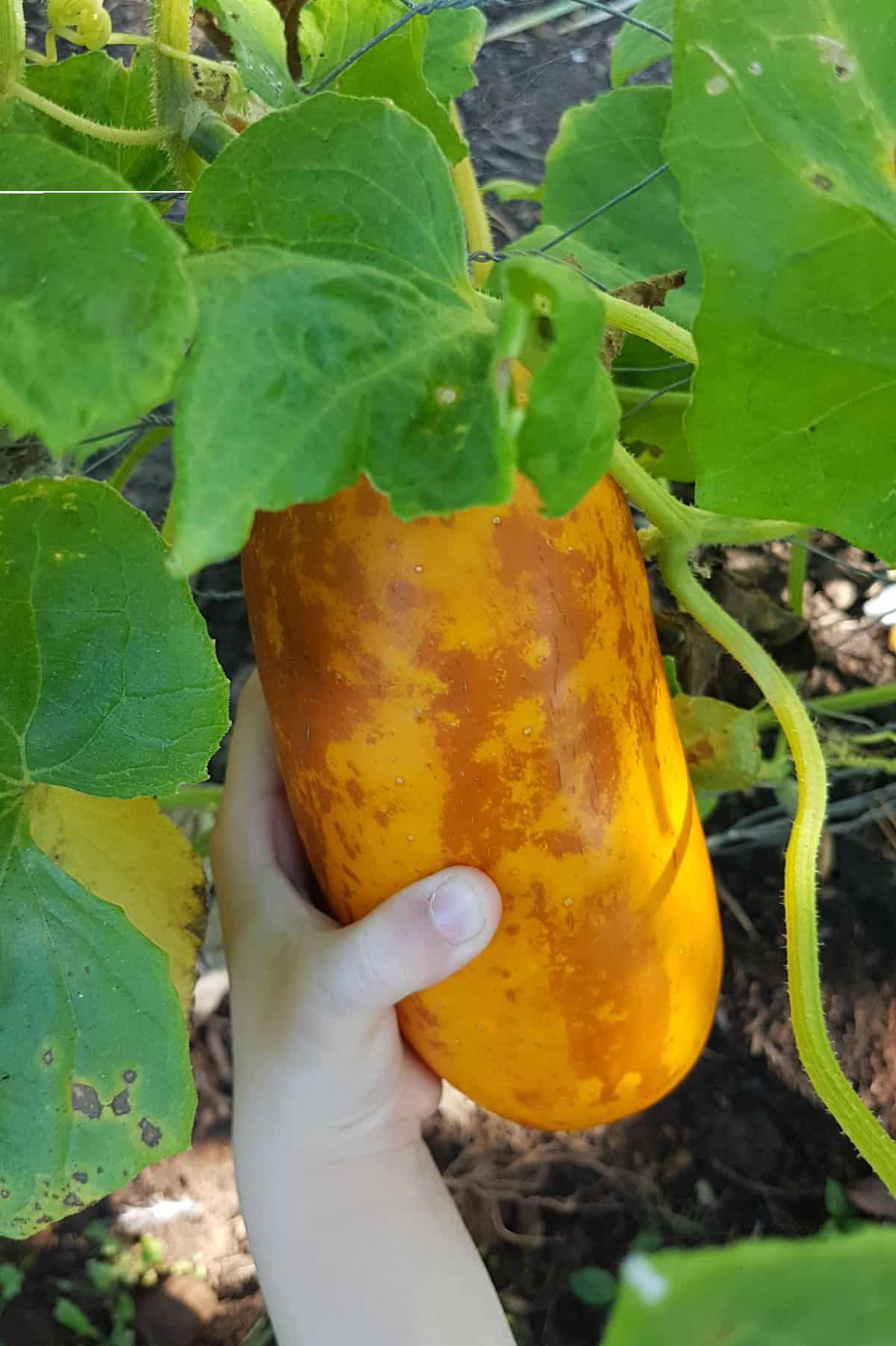
1. Allow the biggest and healthiest cucumber to mature on the vine until it is overripe, yellow or orange, and much larger then normal.
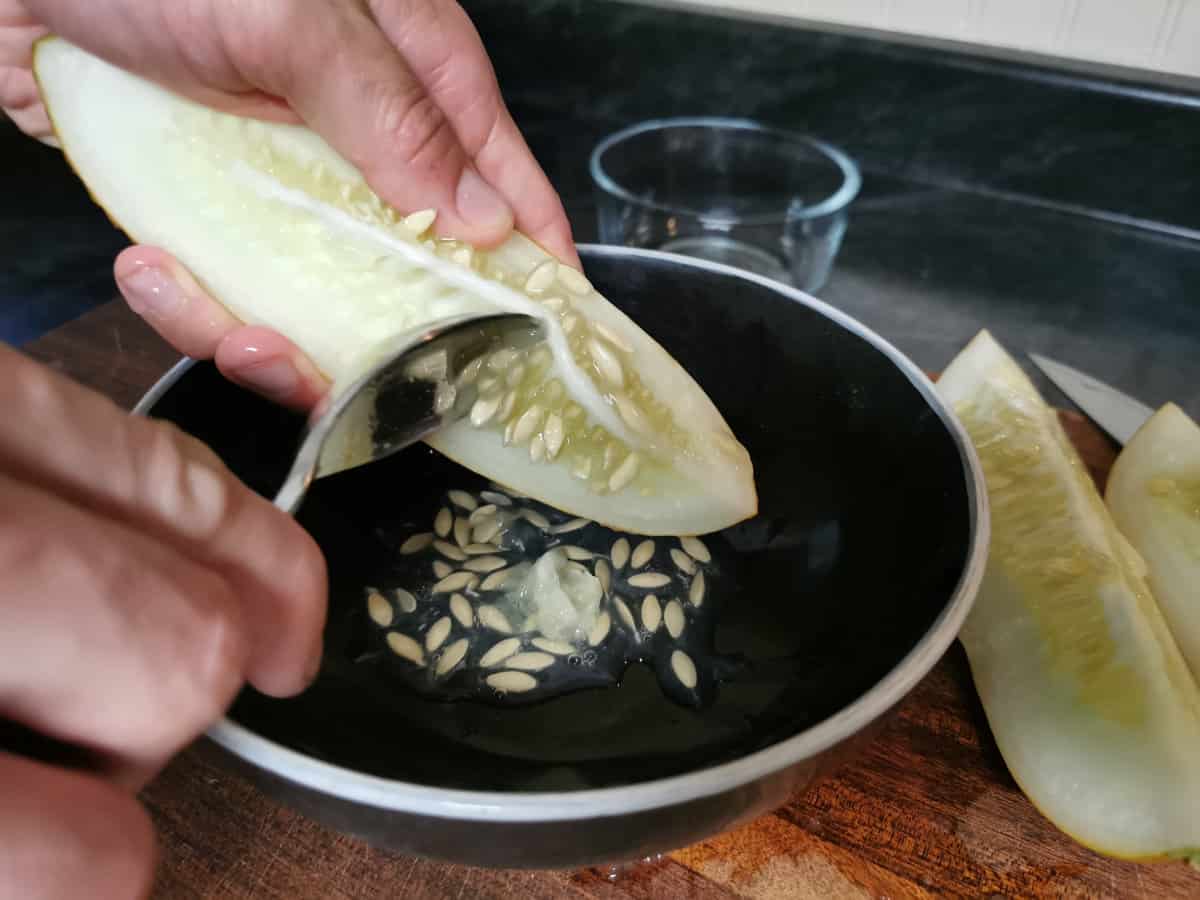
2. Harvest the mature cucumber, and then cut the cucumber open and use a spoon to scoop out all the seeds and watery pulp into a small bowl or mason jar.
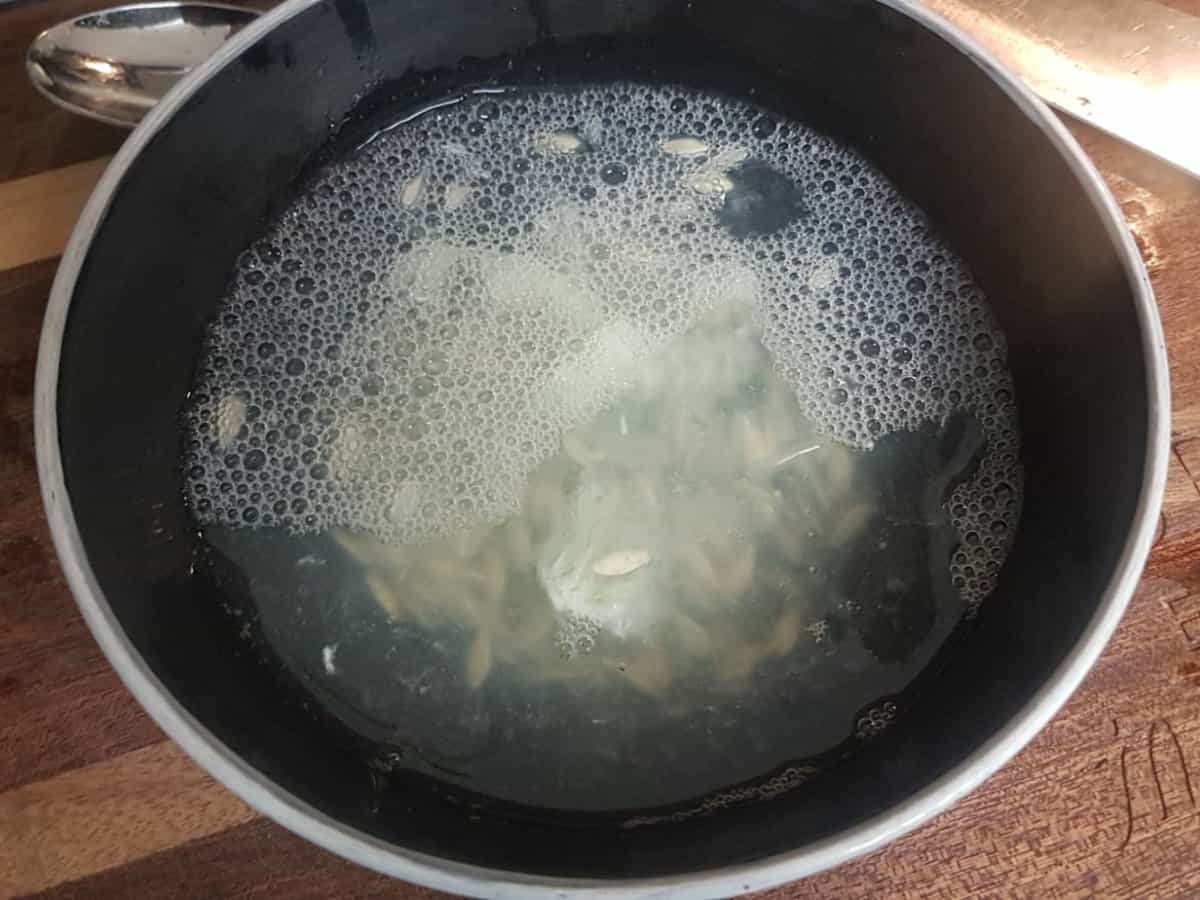
3. Cover the cucumber seeds and pulp with enough room temperature water to fully submerge them. Stir the mixture daily.
Much as when saving tomato seeds, cucumber seeds need to ferment for a few days to separate the gel like substance from the seeds and allow non-viable seeds to float to the surface.
4. After two or three days have passed, you'll see some of the seeds start to sink while others are floating. The floating seeds are poor quality and can be discarded, the sunken seeds are viable seeds and can be rinsed under fresh water with a mesh strainer to remove any remaining gel like pulp.
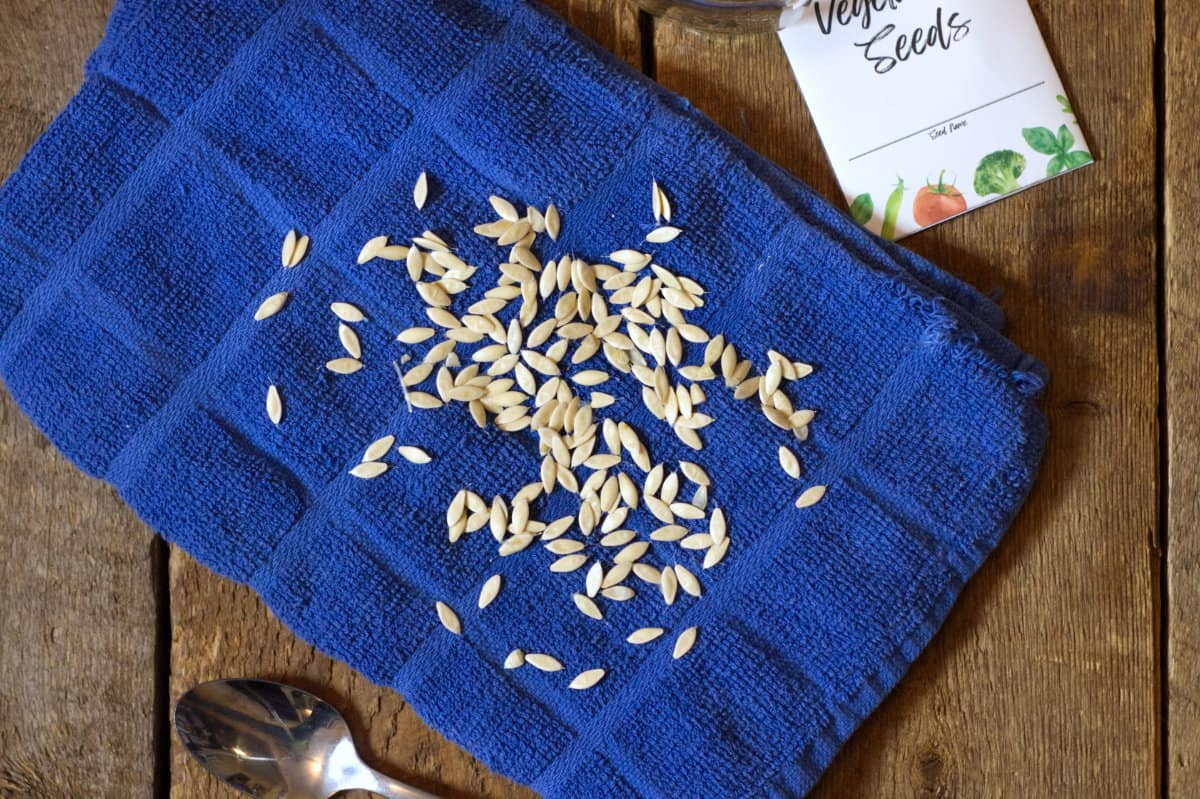
5. Spread the washed cucumber seeds on a clean linen cloth or paper towel to fully dry.
Storing Your Seeds
Once fully dried, store the saved cucumber seeds in a seed envelope or tight glass jar (such as a mason jar). Label the seed envelope or other storage container with the variety of cucumber, the date saved, and any other notes you wish to include.
Homemade seed saving envelopes are ideal for saving seeds as they don't trap moisture as glass or plastic storage options tend to do. Seed saving envelope templates are easy to download and print, and pre-designed templates are quite cheap!
Store the seeds in a dark, cool location until ready to be planted the following year!
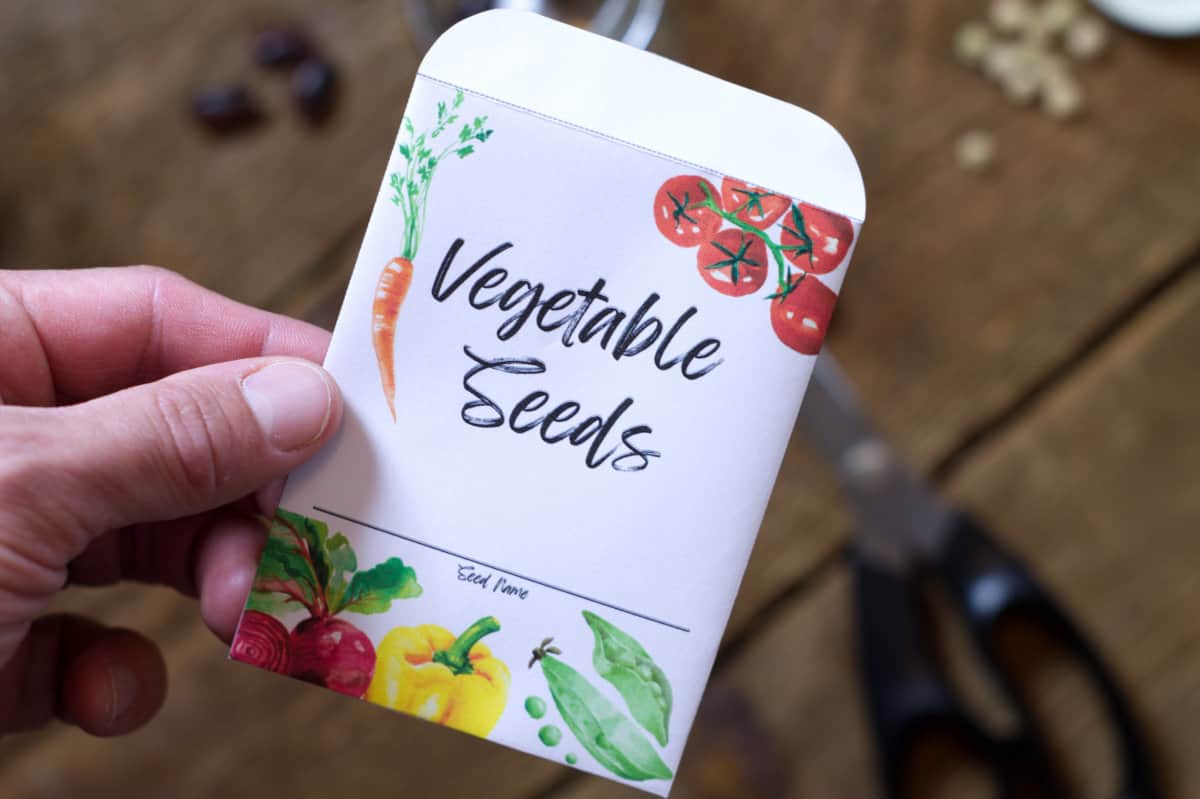
Gardening tip:
When selecting a cucumber to mature for seed saving, pick the biggest, healthiest looking cucumber to save seeds from to increase the chances of healthy plants next year!
Did you find this guide useful?? Comment & Rate it below, then tag me on Facebook. For more DIY gardening tips & from scratch recipes follow me on Facebook & Pinterest

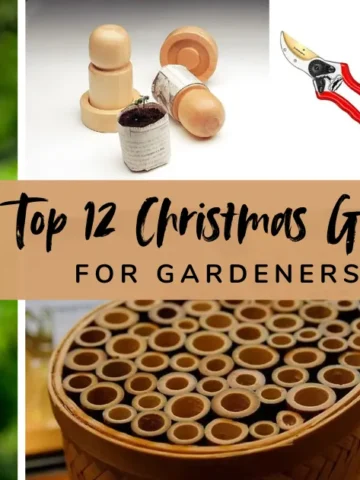
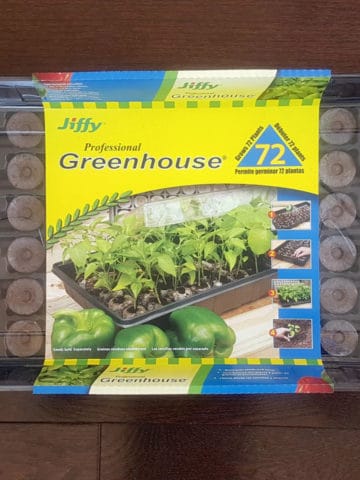
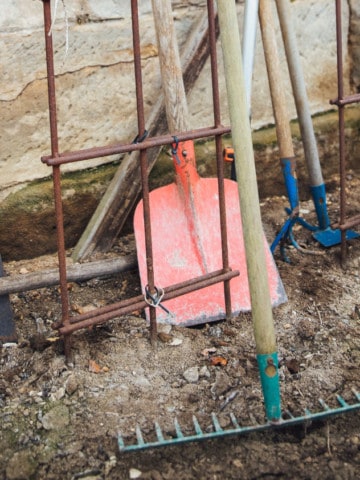
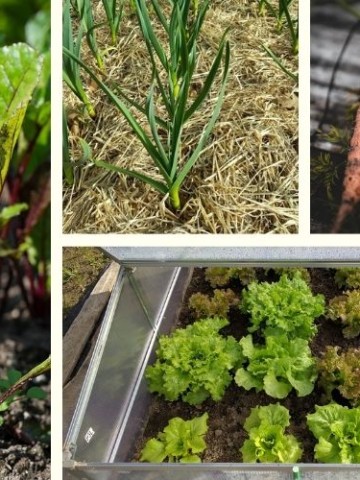
Comments
No Comments